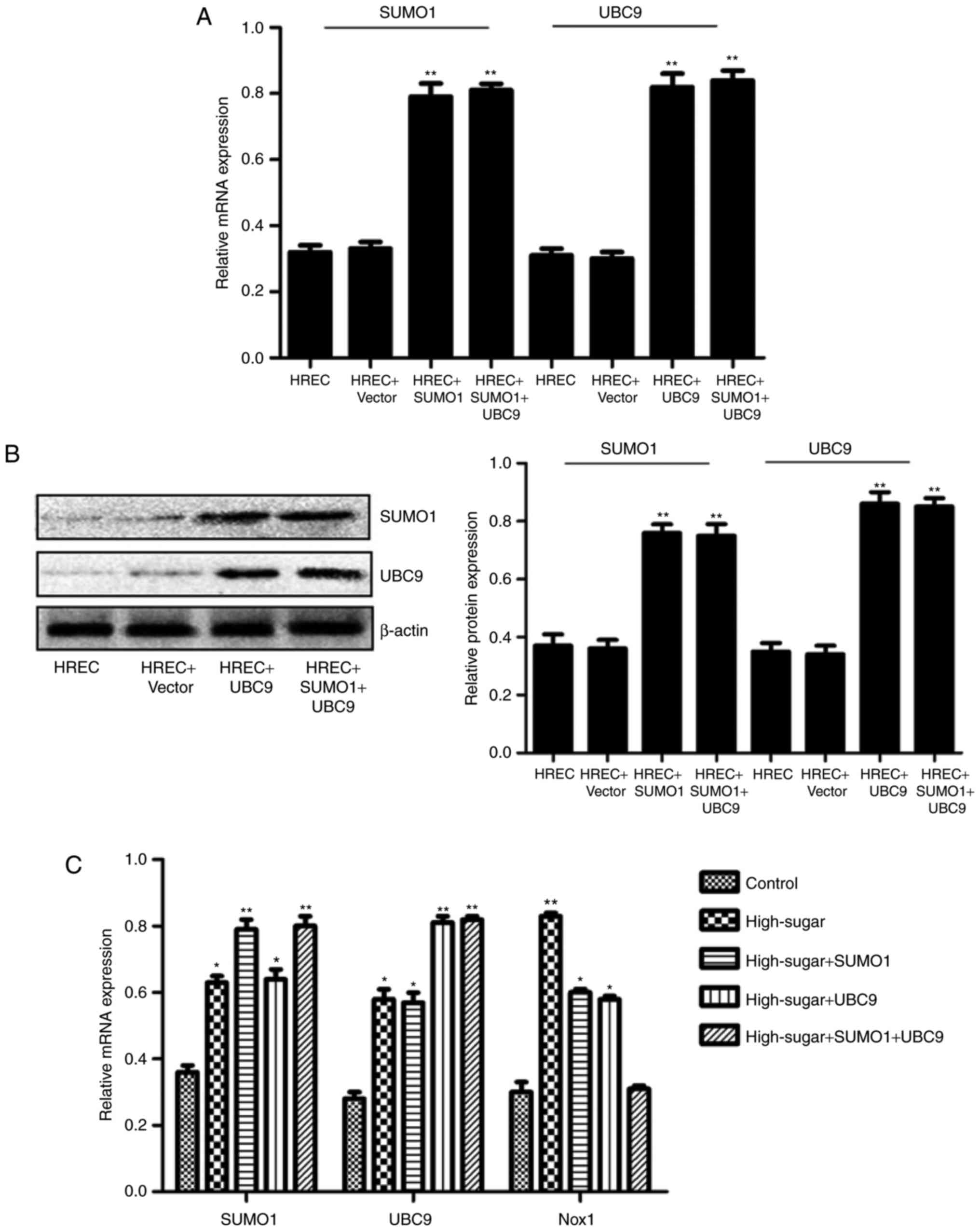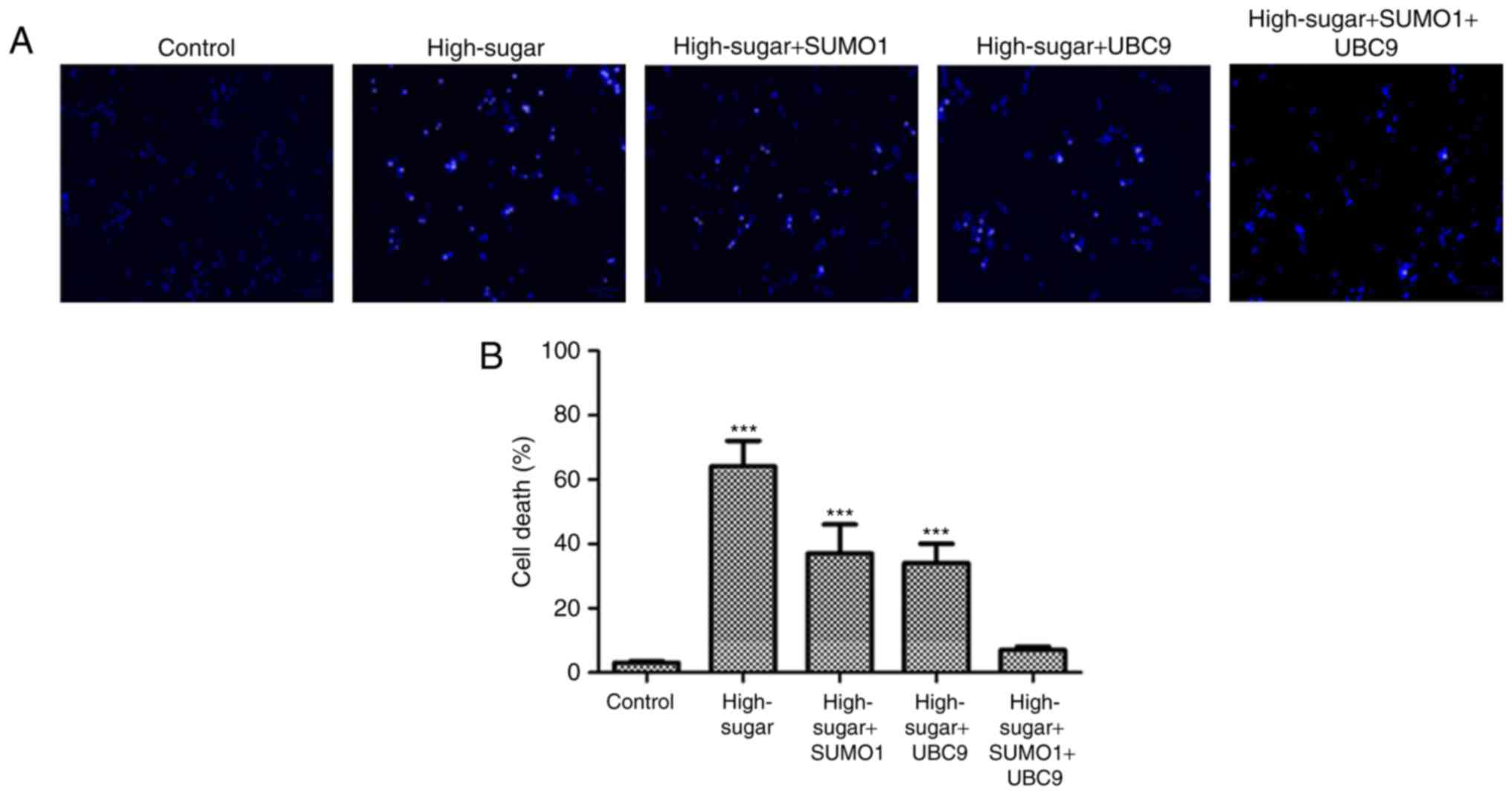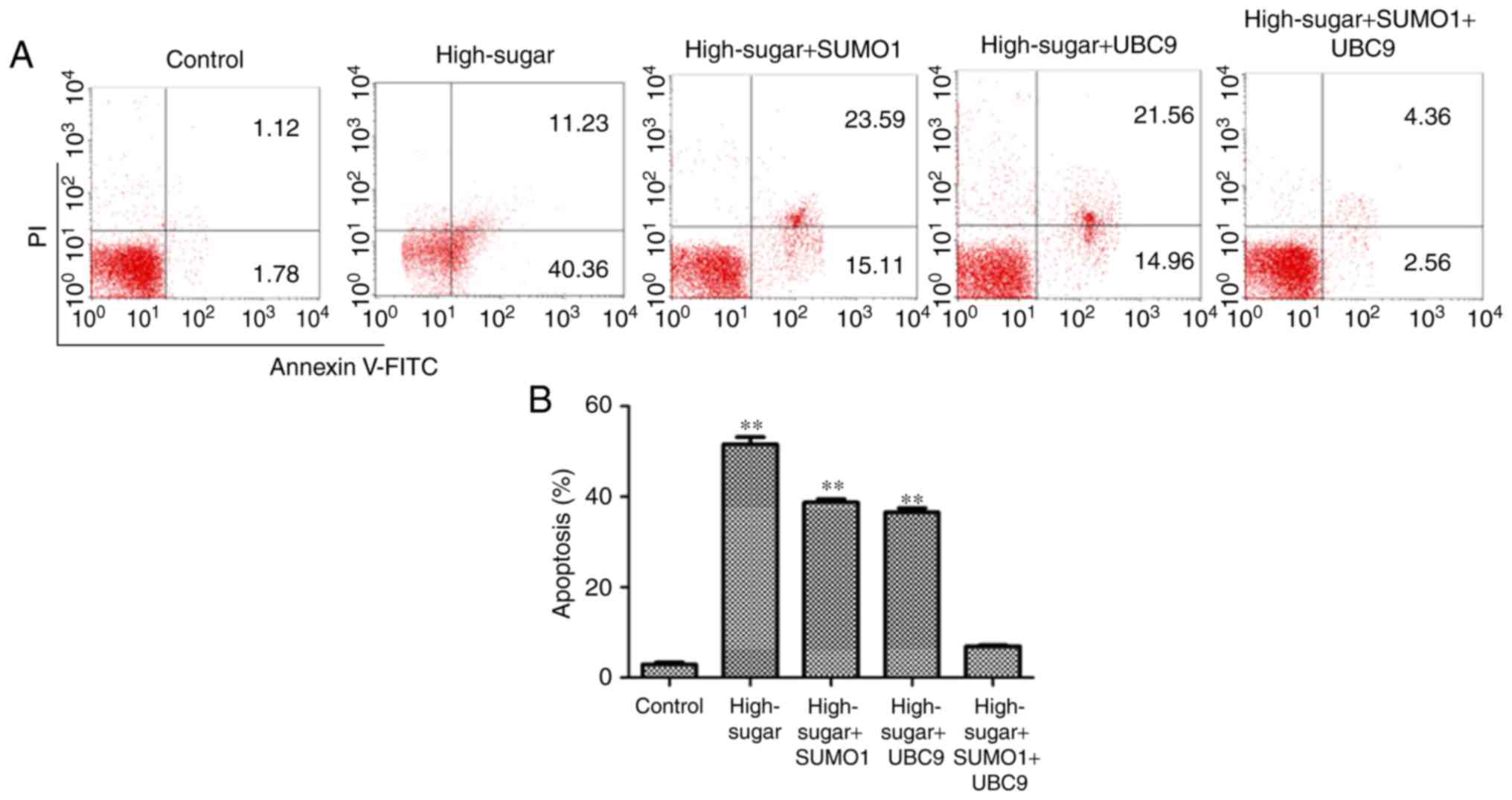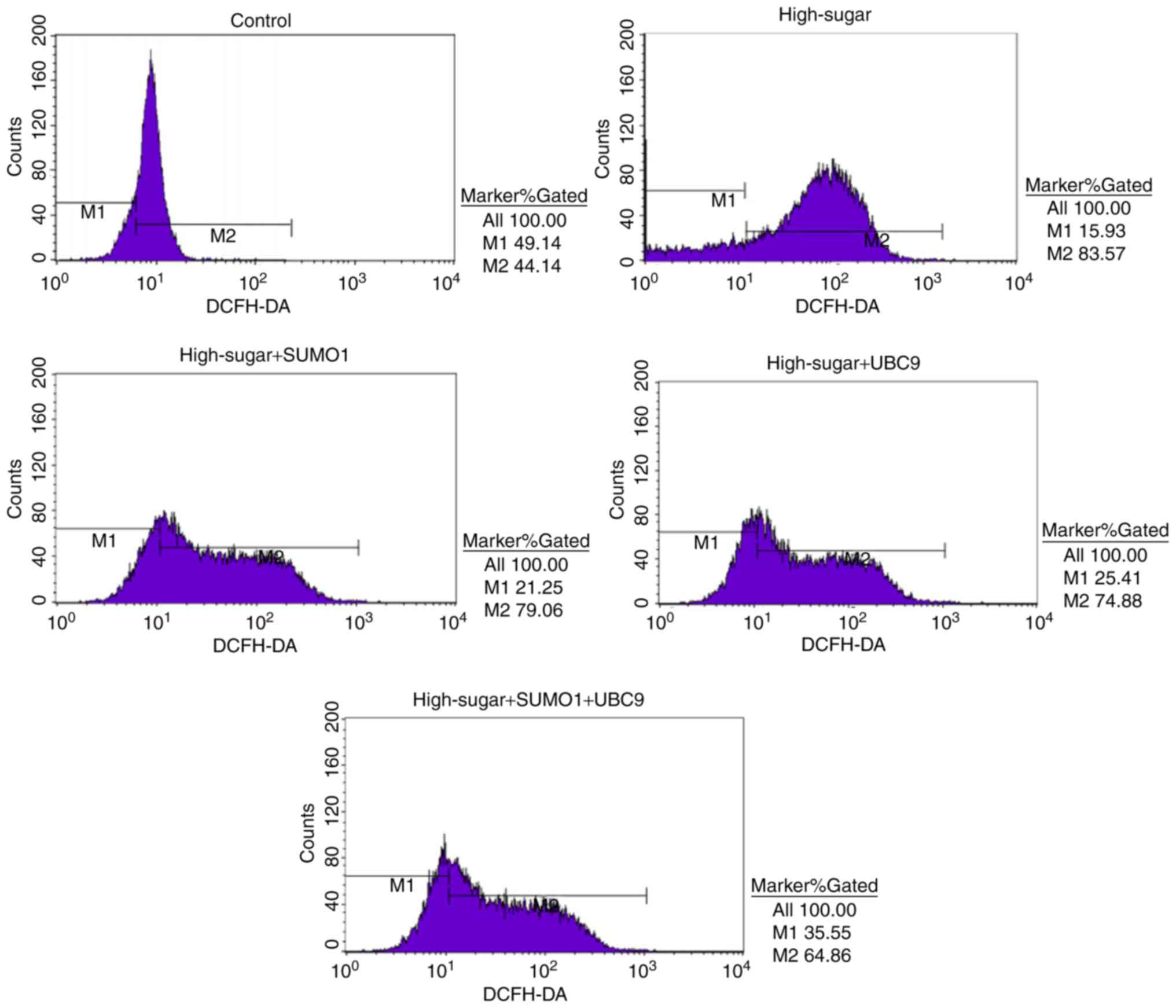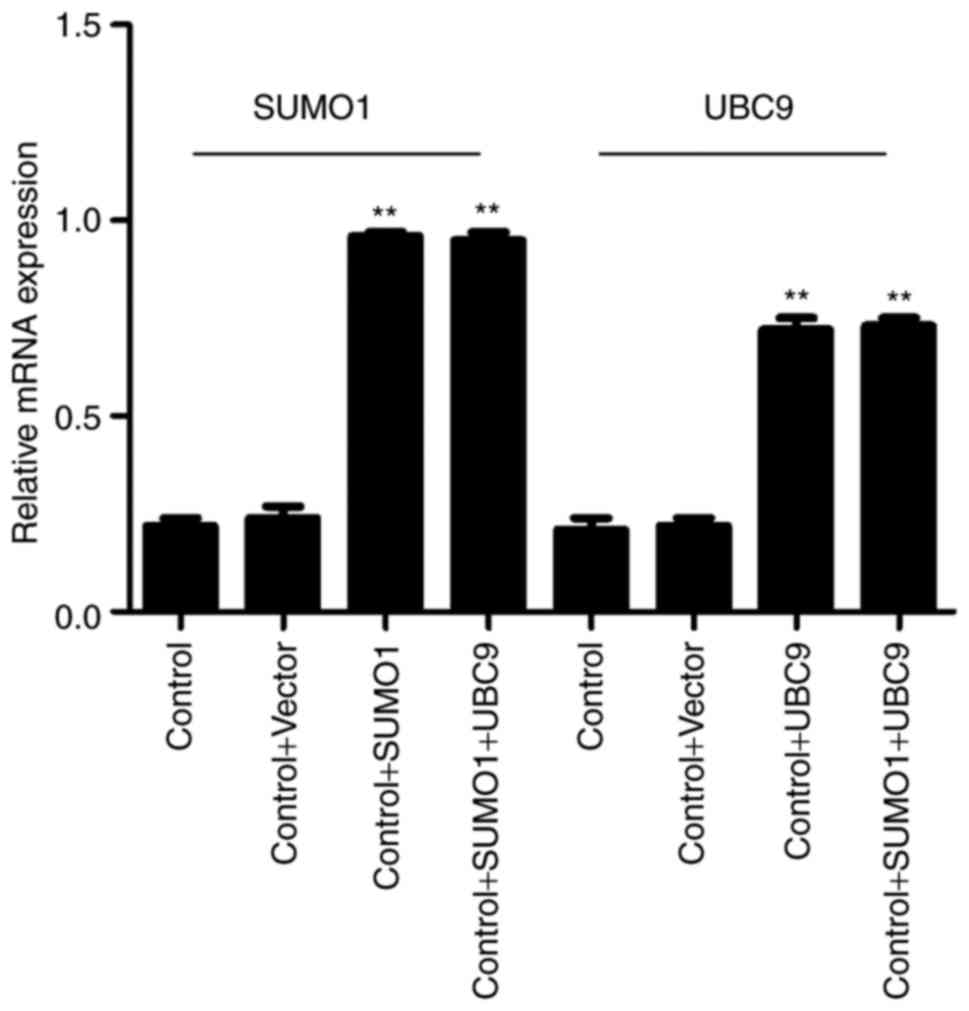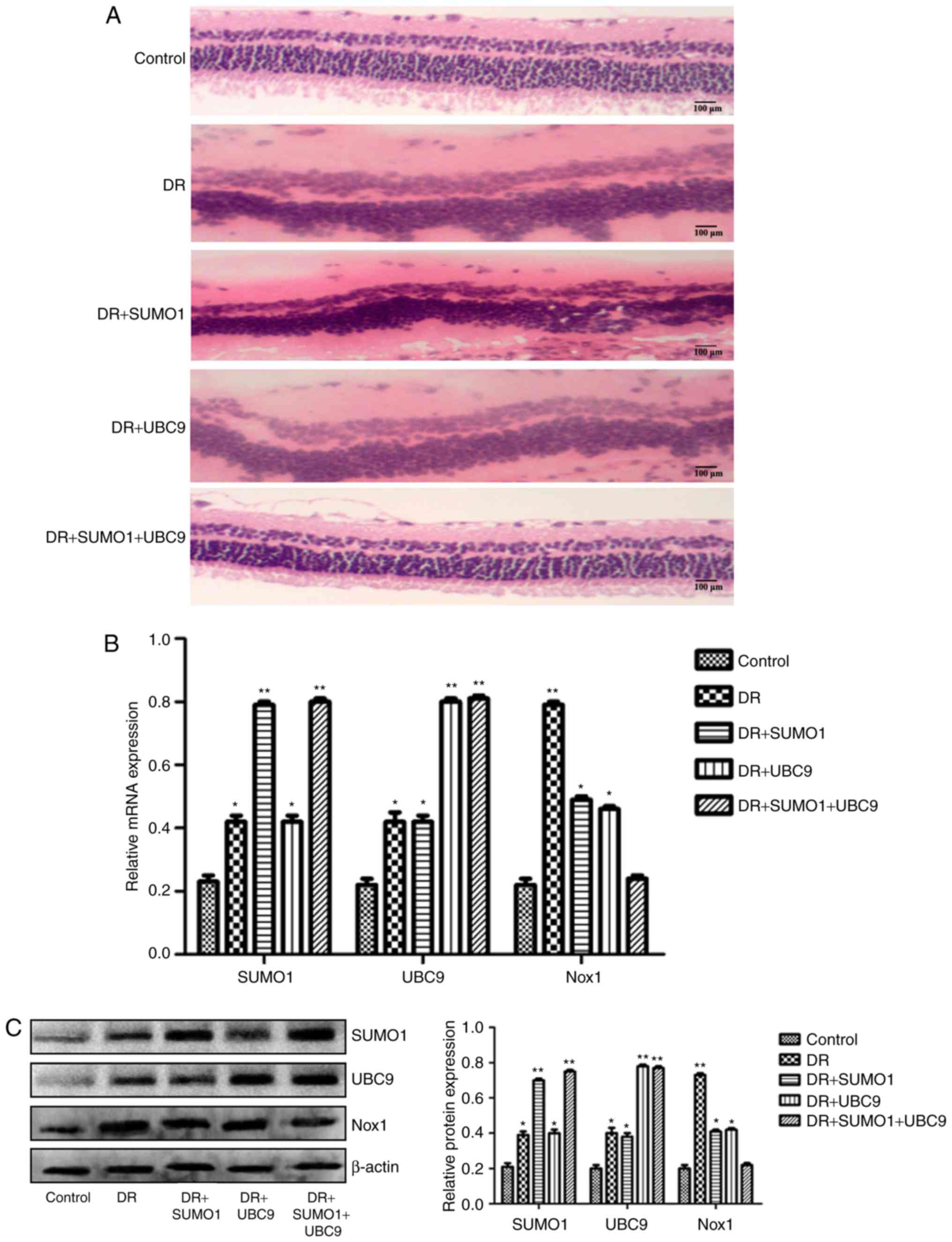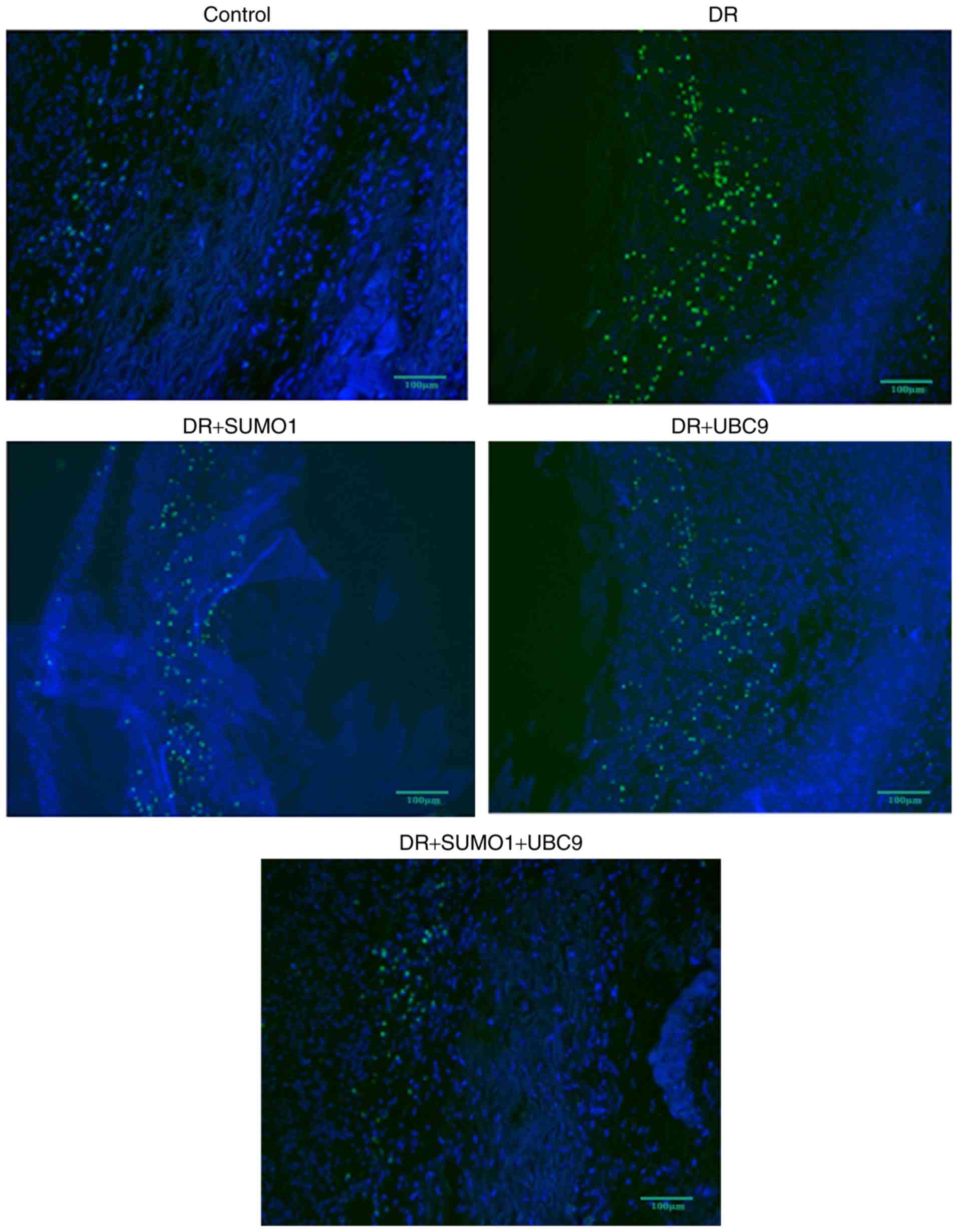|
1
|
Zhang X, Saaddine JB, Chou CF, Cotch MF,
Cheng YJ, Geiss LS, Gregg EW, Albright AL, Klein BE and Klein R:
Prevalence of diabetic retinopathy in the United States, 2005–2008.
JAMA. 304:649–656. 2010. View Article : Google Scholar :
|
|
2
|
Fong DS, Aiello L, Gardner TW, King GL,
Blankenship G, Cavallerano JD, Ferris FL III and Klein R: American
DiabetesAssociation: Retinopathy in diabetes. Diabetes Care. 27
Suppl 1:S84–S87. 2004. View Article : Google Scholar
|
|
3
|
Klein R, Klein BEK, Moss SE, Davis MD and
DeMets DL: The wisconsin epidemiologic study of diabetic
retinopathy: II. Prevalence and risk of diabetic retinopathy when
age at diagnosis is less than 30 years. JAMA Ophthalmol.
102:520–526. 1984.
|
|
4
|
Behl T, Kaur I and Kotwani A: Implication
of oxidative stress in progression of diabetic retinopathy. Surv
Ophthalmol. 61:187–196. 2016. View Article : Google Scholar
|
|
5
|
Safi SZ, Qvist R, Kumar S, Batumalaie K
and Ismail IS: Molecular mechanisms of diabetic retinopathy,
general preventive strategies, and novel therapeutic targets.
Biomed Res Int. 2014:8012692014. View Article : Google Scholar :
|
|
6
|
Schippers JH, Nguyen HM, Lu D, Schmidt R
and Mueller-Roeber B: ROS homeostasis during development: An
evolutionary conserved strategy. Cell Mol Life Sci. 69:3245–3257.
2012. View Article : Google Scholar
|
|
7
|
Wilkinson-Berka JL, Rana I, Armani R and
Agrotis A: Reactive oxygen species, Nox and angiotensin II in
angiogenesis: Implications for retinopathy. Clin Sci. (Lond.).
124:597–615. 2013.
|
|
8
|
Bondeva T and Wolf G: Reactive oxygen
species in diabetic nephropathy: Friend or foe? Nephrol Dial
Transplant. 29:1998–2003. 2014. View Article : Google Scholar
|
|
9
|
Brandes RP, Weissmann N and Schröder K:
Nox family NADPH oxidases: Molecular mechanisms of activation. Free
Radic Biol Med. 76:208–226. 2014. View Article : Google Scholar
|
|
10
|
Dvoriantchikova G, Grant J, Santos AR,
Hernandez E and Ivanov D: Neuronal NAD(P)H oxidases contribute to
ROS production and mediate RGC death after ischemia. Invest
Ophthalmol Vis Sci. 53:2823–2830. 2012. View Article : Google Scholar :
|
|
11
|
Gill G: SUMO and ubiquitin in the nucleus:
Different functions, similar mechanisms? Genes Dev. 18:2046–2059.
2004. View Article : Google Scholar
|
|
12
|
Johnson ES: Protein modification by SUMO.
Annu Rev Biochem. 73:355–382. 2004. View Article : Google Scholar
|
|
13
|
Hwang KW, Won TJ, Kim H, Chun HJ, Chun T
and Park Y: Characterization of the regulatory roles of the SUMO.
Diabetes Metab Res Rev. 27:854–861. 2011. View Article : Google Scholar
|
|
14
|
Pandey D, Chen F, Patel A, Wang CY,
Dimitropoulou C, Patel VS, Rudic RD, Stepp DW and Fulton DJ: SUMO1
negatively regulates reactive oxygen species production from NADPH
oxidases. Arterioscler Thromb Vasc Biol. 31:1634–1642. 2011.
View Article : Google Scholar :
|
|
15
|
Kim HJ, Yun J, Lee J, Hong H, Jeong J, Kim
E, Bae YS and Lee KJ: SUMO1 attenuates stress-induced ROS
generation by inhibiting NADPH oxidase 2. Biochem Biophys Res
Commun. 410:555–562. 2011. View Article : Google Scholar
|
|
16
|
Gimenez M, Schickling BM, Lopes LR and
Miller FJ Jr: Nox1 in cardiovascular diseases: Regulation and
pathophysiology. Clin Sci (Lond). 130:151–165. 2016. View Article : Google Scholar
|
|
17
|
Chhunchha B, Fatma N, Kubo E and Singh DP:
Aberrant sumoylation signaling evoked by reactive oxygen species
impairs protective function of Prdx6 by destabilization and
repression of its transcription. FEBS J. 281:3357–3381. 2014.
View Article : Google Scholar :
|
|
18
|
Li M, Guo D, Isales CM, Eizirik DL,
Atkinson M, She JX and Wang CY: SUMO wrestling with type 1
diabetes. J Mol Med (Berl). 83:504–513. 2005. View Article : Google Scholar
|
|
19
|
Arden GB and Sivaprasad S: Hypoxia and
oxidative stress in the causation of diabetic retinopathy. Current
Diabetes Rev. 7:291–304. 2011. View Article : Google Scholar
|
|
20
|
Liu GD, Xu C, Feng L and Wang F: The
augmentation of O-GlcNAcylation reduces glyoxal-induced cell injury
by attenuating oxidative stress in human retinal microvascular
endothelial cells. Int J Mol Med. 36:1019–1027. 2015. View Article : Google Scholar :
|
|
21
|
Banskota S, Regmi SC and Kim JA: NOX1 to
NOX2 switch deactivates AMPK and induces invasive phenotype in
colon cancer cells through overexpression of MMP-7. Mol Cancer.
14:1232015. View Article : Google Scholar :
|
|
22
|
Valente AJ, El Jamali A, Epperson TK,
Gamez MJ, Pearson DW and Clark RA: NOX1 NADPH oxidase regulation by
the NOXA1 SH3 domain. Free Radic Biol Med. 43:384–396. 2007.
View Article : Google Scholar
|
|
23
|
Livak KJ and Schmittgen TD: Analysis of
relative gene expression data using real-time quantitative PCR and
the 2(-Delta Delta C(T)) method. Methods. 25:402–408. 2001.
View Article : Google Scholar
|
|
24
|
Li Z, Ma L, Chen X, Li Y, Li S, Zhang J
and Lu L: Glycogen synthase kinase-3: A key kinase in retinal
neuron apoptosis in early diabetic retinopathy. Chin Med J (Engl.).
127:3464–3470. 2014.
|
|
25
|
Jia J, Zhang X, Hu YS, Wu Y, Wang QZ, Li
NN, Guo QC and Dong XC: Evaluation of in vivo antioxidant
activities of Ganoderma lucidum, polysaccharides in STZ-diabetic
rats. Food Chem. 115:32–36. 2009. View Article : Google Scholar
|
|
26
|
Gong CY, Lu B, Hu QW and Ji LL:
Streptozotocin induced diabetic retinopathy in rat and the
expression of vascular endothelial growth factor and its receptor.
Int J Ophthalmol. 6:573–577. 2013.
|
|
27
|
Xiao X, Cai J, Xu J, Wang R, Cai J, Liu Y,
Xu W, Sun X and Li R: Protective effects of hydrogen saline on
diabetic retinopathy in a streptozotocin-induced diabetic rat
model. J Ocul Pharmacol Ther. 28:76–82. 2012. View Article : Google Scholar
|
|
28
|
Hong Y, Rogers R, Matunis MJ, Mayhew CN,
Goodson ML, Park-Sarge OK and Sarge KD: Regulation of heat shock
transcription factor 1 by stress-induced SUMO-1 modification. J
Biol Chem. 276:40263–40267. 2001. View Article : Google Scholar
|
|
29
|
Shishido T, Woo CH, Ding B, McClain C,
Molina CA, Yan C, Yang J and Abe J: Effects of MEK5/ERK5
association on small ubiquitin-related modification of ERK5:
Implications for diabetic ventricular dysfunction after myocardial
infarction. Circ Res. 102:1416–1425. 2008. View Article : Google Scholar :
|
|
30
|
Luciani A, Villella VR, Vasaturo A,
Giardino I, Raia V, Pettoello-Mantovani M, D'Apolito M, Guido S,
Leal T, Quaratino S and Maiuri L: SUMOylation of tissue
transglutaminase as link between oxidative stress and inflammation.
J Immunol. 183:2775–2784. 2009. View Article : Google Scholar
|
|
31
|
Kurtzman AL and Schechter N: Ubc9
interacts with a nuclear localization signal and mediates nuclear
localization of the paired-like homeobox protein Vsx-1 independent
of SUMO-1 modification. Proc Natl Acad Sci USA. 98:5602–5607. 2001.
View Article : Google Scholar :
|



